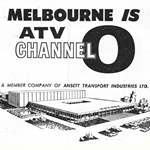 This Friday, 1 August, marks the 50th anniversary of the launch of the first channel in what is now Network Ten. Earlier this year we took a look at the countdown to the launch of this new channel — ATV0 — plus its first test programs. This week we present some special posts in commemorating the history of the Ten Network and in particular ATV0, now Ten Melbourne. This is Part I.
This Friday, 1 August, marks the 50th anniversary of the launch of the first channel in what is now Network Ten. Earlier this year we took a look at the countdown to the launch of this new channel — ATV0 — plus its first test programs. This week we present some special posts in commemorating the history of the Ten Network and in particular ATV0, now Ten Melbourne. This is Part I.
- Part II — ATV0: The Channel 0 Viewers’ Club
- Part III — ATV10… A new decade, a new channel
- Part IV — Ten: Rising from receivership
- Part V — Ten: 2000 to now
It had been over a year in planning, costing millions of pounds and involving hundreds of people — and on Saturday, 1 August, 1964, Melbourne viewers became the first in Australia to have access to a third local commercial station: ATV0.
Opening night was a star-studded affair as various dignitaries and showbusiness identities descended towards the station’s new studio complex, a modern television oasis amid farms and paddocks in what was then the outskirts of Melbourne.
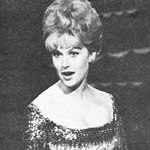 Guests arriving at the special event were interviewed by station personalities, newsreader Barry McQueen and children’s show host Nancy Cato, before the channel made its official debut at 7.00pm. Station owner Reg Ansett and general manager Len Mauger made brief opening speeches before the main event — This Is It! — a one-hour extravaganza of music, variety and comedy based around Melbourne’s excitement for the new channel, featuring Diana Trask (then just recently returned from a successful tour of the United States), Brian James, Wyn Roberts, Vikki Hammond (pictured), Lionel Long, Elsie Morrison, Harold Blair, Kathy Gorham, Keith Michell, Lou Toppano and host Ray Taylor.
Guests arriving at the special event were interviewed by station personalities, newsreader Barry McQueen and children’s show host Nancy Cato, before the channel made its official debut at 7.00pm. Station owner Reg Ansett and general manager Len Mauger made brief opening speeches before the main event — This Is It! — a one-hour extravaganza of music, variety and comedy based around Melbourne’s excitement for the new channel, featuring Diana Trask (then just recently returned from a successful tour of the United States), Brian James, Wyn Roberts, Vikki Hammond (pictured), Lionel Long, Elsie Morrison, Harold Blair, Kathy Gorham, Keith Michell, Lou Toppano and host Ray Taylor.
The Age later reviewed This Is It! as a bold start for the channel: “This Is It! was at best an exercise in presenting something different by taking Melbourne, and its history, on a gay jaunt. This it set out to do with varying degrees of success, diverting only in two instances to pay tribute to the war effort, and Dame Nellie Melba. The program showed more boldness than finesse in dealing with the “sacred cows”, notably the RSL (in the Mafia reference), and by sending up Melbourne’s love of sport with a film simulating the birth of Australian Rules football.
“We saw Ray Taylor, who is being “groomed” as the station’s star personality. He will please viewers who have been clamouring for more sophisticated, revue-type entertainment. This looks like his field.”
This Is It! was followed by Seven Wonderful Nights, a half-hour preview of the upcoming week of shows to come from the new channel, then The Dinah Shore Show (featuring a performance by Joan Sutherland) and Summer Of The Seventeenth Doll, the film adaptation of the play written by Australian Ray Lawler.
Rival channels weren’t about to give the new channel a free kick for its first night, either — in particular HSV7, who at the last minute strategically programmed a Beatles special followed by the TV premiere of the film Guys And Dolls.
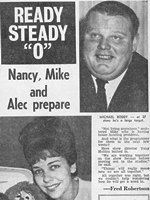 Once the excitement of opening night had settled it was quickly down to business. In its first week of broadcasting ATV0 had launched The Children’s Show (later to become The Magic Circle Club) with Nancy Cato, Michael Boddy and Alec Finlay, teen music show Go!! hosted by Alan Field, current affairs programs The Pacemakers (with newsreader Barry McQueen), In Close Up and Focus, the Friday night show Philip Gibbs’ Sports Angle and the Saturday night Ray Taylor Show, featuring a newcomer to Melbourne TV who would stay with the channel for the next quarter of a century — Roy Hampson.
Once the excitement of opening night had settled it was quickly down to business. In its first week of broadcasting ATV0 had launched The Children’s Show (later to become The Magic Circle Club) with Nancy Cato, Michael Boddy and Alec Finlay, teen music show Go!! hosted by Alan Field, current affairs programs The Pacemakers (with newsreader Barry McQueen), In Close Up and Focus, the Friday night show Philip Gibbs’ Sports Angle and the Saturday night Ray Taylor Show, featuring a newcomer to Melbourne TV who would stay with the channel for the next quarter of a century — Roy Hampson.
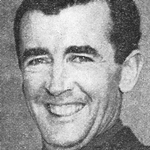 ATV0 also showed bold initiative with its news service — launching a 45-minute news bulletin screening each weeknight at 6.15pm, fronted by Barry McQueen (pictured), giving the channel a 15-minute head start on the half-hour bulletins of rivals HSV7 and GTV9. Weekend news bulletins were shorter — 15 minutes — but screened at 5.45pm, before the rival channel bulletins.
ATV0 also showed bold initiative with its news service — launching a 45-minute news bulletin screening each weeknight at 6.15pm, fronted by Barry McQueen (pictured), giving the channel a 15-minute head start on the half-hour bulletins of rivals HSV7 and GTV9. Weekend news bulletins were shorter — 15 minutes — but screened at 5.45pm, before the rival channel bulletins.
The channel didn’t just hope to rely on its own production to gain viewers, it also had an impressive line-up of overseas programs, some of which were snapped away from rival channels. Programs like Sargent Bilko, Bonanza, The Patty Duke Show, The Greatest Show On Earth, The Fugitive, The Phil Silvers Show, Outer Limits, Ivanhoe, Burke’s Law, Grindl, The Steve Allen Show, Temple Houston, The Richard Boone Show, The Grey Ghost and The Bill Dana Show were among those launched in ATV0’s first week.
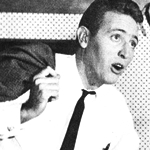 Local production later expanded with the lavish variety series Showcase, produced by Crawford Productions and hosted by Gordon Boyd, plus a new variety series, Jimmy, hosted by Jimmy Hannan (pictured). The success of Go!! later led to the pop music genre being covered further with Kommotion on weekday afternoons and the Saturday morning show Uptight.
Local production later expanded with the lavish variety series Showcase, produced by Crawford Productions and hosted by Gordon Boyd, plus a new variety series, Jimmy, hosted by Jimmy Hannan (pictured). The success of Go!! later led to the pop music genre being covered further with Kommotion on weekday afternoons and the Saturday morning show Uptight.
There were also brief attempts at comedy with sitcoms Hey You, starring Colin McEwan and Ernie Bourne, and Good Morning Mr Doubleday.
As the 1960s continued ATV0 expanded into daytime TV. Programming hours were extended to mornings and 1967 saw the launch of a daily magazine show, Chit Chat, with Roy Hampson and Katrina Pye. The half-hour show was created with a tiny budget (with the only assurance that the show would continue only as long as it made money, hence the eventual addition of what we now know as product placement or infomercials) and program preparation in the early days was often just a matter of scanning the morning newspapers for items of interest to discuss on air. The show continued in various guises, changing its name each time a new producer would come on board, for the next 20 years but Hampson remained as host right through the until the axe finally fell on what was then Good Morning Melbourne at the close of 1988.
Despite its popularity, The Magic Circle Club came to an abrupt end in 1967 but while most of the cast moved across to ABC to start up Adventure Island, the character of Fredd Bear (played by Tedd Dunn) continued on at ATV0 with the popular Fredd Bear’s Breakfast A Go-Go, hosted by Judy Banks and featuring Michael McCarthy and Colin McEwan.
ATV0 was the first channel in Melbourne to broadcast complete Australian Rules football games when it started broadcasting VFA (now VFL) matches on Sunday afternoons. Live broadcast of sport in the home market was usually frowned upon as it was thought to have an effect on gate attendances. In the case of VFA the Sunday afternoon broadcasts served to increase the alternative league’s profile and boosted audiences at the grounds.
Regular broadcasts of country horse racing also became a daytime fixture for the station, with one race meeting in 1967 making its own history as the first live colour telecast in Australia, eight years before the official adoption of colour TV in Australia.
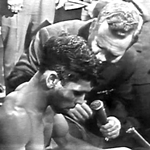 Breaking into a market with three well-established players is hard enough, but ATV also had to deal with the reality that so much of its potential audience may not have had the ability to tune to Channel 0, as older sets did not include that channel on the dial, and some TV antennas were also not designed to receive the low-band frequency. A major breakthrough for the channel came in 1969 when Ansett and sports editor Philip Gibbs organised a boxing title fight between Lionel Rose and Alan Rudkin. The broadcast set a new ratings record — 67 per cent of Melbourne households — that would not be broken until the Sydney Olympic Games in 2000.
Breaking into a market with three well-established players is hard enough, but ATV also had to deal with the reality that so much of its potential audience may not have had the ability to tune to Channel 0, as older sets did not include that channel on the dial, and some TV antennas were also not designed to receive the low-band frequency. A major breakthrough for the channel came in 1969 when Ansett and sports editor Philip Gibbs organised a boxing title fight between Lionel Rose and Alan Rudkin. The broadcast set a new ratings record — 67 per cent of Melbourne households — that would not be broken until the Sydney Olympic Games in 2000.
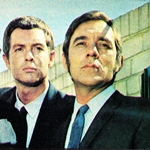 While the Sixties saw ATV0 make its debut with an emphasis on youth and variety shows and local sport, the turn of the decade into the Seventies saw the channel make its first steps in the production of drama.
While the Sixties saw ATV0 make its debut with an emphasis on youth and variety shows and local sport, the turn of the decade into the Seventies saw the channel make its first steps in the production of drama.
Unlike rival dramas that were produced by independent producers, such as Crawford Productions, The Long Arm (pictured) was an in-house production, starring Robert Brunning, Sandy Harbutt, Bill Hunter, Barbara Mason and Lyndal Moor. The series debuted in April 1970 but was axed only three months later.
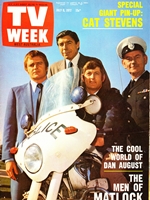 Despite the disappointment of The Long Arm, ATV0 had more success with its next drama venture — a rural cop drama from Crawford Productions, Matlock Police. The series, set in a fictional town in country Victoria, starred Grigor Taylor, Michael Pate, Paul Cronin and Vic Gordon (pictured). The first episode featured brief glimpses of nudity as a group of hippies are seen skinny dipping while trespassing on a rural property. Nudity was not a tactic employed often by Matlock Police, but rather it became a trademark for the two drama series that were to follow.
Despite the disappointment of The Long Arm, ATV0 had more success with its next drama venture — a rural cop drama from Crawford Productions, Matlock Police. The series, set in a fictional town in country Victoria, starred Grigor Taylor, Michael Pate, Paul Cronin and Vic Gordon (pictured). The first episode featured brief glimpses of nudity as a group of hippies are seen skinny dipping while trespassing on a rural property. Nudity was not a tactic employed often by Matlock Police, but rather it became a trademark for the two drama series that were to follow.
With financial problems mounting, not just for ATV0 but also its interstate counterparts, the re-named 0-10 Network made a last ditch effort to turn the situation around — the controversial Number 96. Production started late in 1971 and its debut in March 1972 became known as ‘the night Australian television lost its virginity’. The Sydney-based series set around the residents of a fictional apartment building, where sex and social taboos became the norm, was a ratings hit and turned the network’s fortunes around. By 1973 it was Australia’s top-rating series, a previously unheard of achievement for the third commercial network.
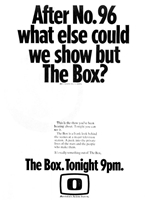 The success of Number 96 led to ATV0 responding with its own take on adult drama — The Box. The Box, launched in February 1974, was a series set behind the scenes of a fictional TV station, UCV12, although some elements were thought to be inspired by real-life people and events from within the television industry — much of which still can’t be confirmed to this day!
The success of Number 96 led to ATV0 responding with its own take on adult drama — The Box. The Box, launched in February 1974, was a series set behind the scenes of a fictional TV station, UCV12, although some elements were thought to be inspired by real-life people and events from within the television industry — much of which still can’t be confirmed to this day!
By 1974, ATV0 was operating at full steam, with the Nunawading studios producing a range of programs for broadcast across the network. As well as Matlock Police and The Box the studios were producing Young Talent Time, The Price Is Right, variety show It’s Magic, Australian Popular Song Festival and the TV Week King Of Pop Awards. The Roy Hampson Show (later to become Everyday and then Good Morning Melbourne) continued as the flagship of the morning line-up and the channel had started an annual telethon for the Nerve Deafness Foundation.
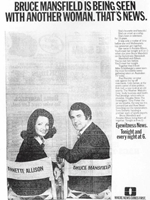 Bruce Mansfield had taken over as chief newsreader at Eyewitness News as Mike Willesee became network director of news and current affairs. Mansfield continued to front Eyewitness News through to the end of the decade, joined in 1978 by Gail Jarvis and then Annette Allison (pictured with Mansfield) in 1979.
Bruce Mansfield had taken over as chief newsreader at Eyewitness News as Mike Willesee became network director of news and current affairs. Mansfield continued to front Eyewitness News through to the end of the decade, joined in 1978 by Gail Jarvis and then Annette Allison (pictured with Mansfield) in 1979.
Sporting telecasts continued covering horse racing meetings and Sunday afternoon VFA.
In July 1974 the channel adopted the slogan ‘First In Color’ (with American spelling) as Australian television approached the full-scale introduction of colour transmission.
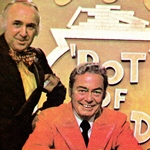 The conversion to full colour transmission in March 1975 was soon followed by a new variety show, the talent quest Pot Of Gold hosted by Tommy Hanlon Jnr. The daytime show provided some performances not always memorable for the right reasons but would be best remembered for the blunt assessments offered by lead judge Bernard King. There was also variety in the evenings with Ernie Sigley‘s Ernie in 1976 and later Something Special and Peter Couchman Tonight.
The conversion to full colour transmission in March 1975 was soon followed by a new variety show, the talent quest Pot Of Gold hosted by Tommy Hanlon Jnr. The daytime show provided some performances not always memorable for the right reasons but would be best remembered for the blunt assessments offered by lead judge Bernard King. There was also variety in the evenings with Ernie Sigley‘s Ernie in 1976 and later Something Special and Peter Couchman Tonight.
Outdoor game show Almost Anything Goes, based on a European format, was produced from the grounds of the Nunawading studios and screened on Sunday nights. The format was revisited a decade later as It’s A Knockout.
Despite the channel’s commitment to horse racing, Melbourne viewers continued to be denied the chance to see the Melbourne Cup live on TV. Melbourne’s four channels could offer no more than delayed coverage of the race hours after it had been run. It was 1978 before ATV0 became the first channel to show the Melbourne Cup live to Melbourne viewers. The Melbourne Cup Carnival would continue to be a flagship for the channel’s sports coverage for the next 20 years.
Sitcom The Bluestone Boys tried to make laughs from prison life, and the short-lived The Tea Ladies, starring Pat McDonald (post-Number 96) and Sue Jones, attempted political humour as told by a couple of tea ladies working in Parliament House.
Five years after the demise of Fredd Bear’s Breakfast A Go-Go, ATV0 re-entered breakfast television with a similar program, The Early Bird Show. The weekday program was hosted by Michael McCarthy and Marie van Maaren and continued through to 1980.
Daryl Somers and Ossie Ostrich left Hey Hey It’s Saturday at Nine and made the move to prime time at ATV0 with The Daryl And Ossie Show. The game show, intended as a replacement for the Sydney-based Blankety Blanks, lasted only eight weeks before Daryl and Ossie went back to Nine to revive Hey Hey It’s Saturday.
Almost a decade after ATV0 made ratings history with its Rose-Rudkin title fight, the channel again rewrote the record books with the landmark US mini-series Roots in 1977. The series hit a rating of 54 (per cent of households) and its sequel, Roots: The Next Generations, was also a strong performer.
As Number 96 and The Box were on the way out, Crawford Productions and ATV0 attempted to fill the void with Hotel Story, a weekly series based around a large hotel. Despite a strong cast, including Terence Donovan, June Salter, Carmen Duncan, George Spartels, Camilla Rountree and Max Meldrum, production was axed before the first episode went to air. Amid the publicity of the abrupt cancellation ATV0 went on to rush the few completed episodes to air to let the viewers see what the fuss was about.
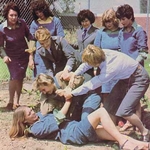 The channel had much better luck with its next drama series, Prisoner, which became a hit not only in Australia but also sold well overseas. Prisoner was not only taped within the studios at Nunawading but the station building itself became the star of the show as the exterior setting for the fictional Wentworth Detention Centre. Almost 30 years since its demise the series still claims a dedicated fan base and has inspired a modern-day adaptation, Wentworth.
The channel had much better luck with its next drama series, Prisoner, which became a hit not only in Australia but also sold well overseas. Prisoner was not only taped within the studios at Nunawading but the station building itself became the star of the show as the exterior setting for the fictional Wentworth Detention Centre. Almost 30 years since its demise the series still claims a dedicated fan base and has inspired a modern-day adaptation, Wentworth.
 By the close of the decade, Reg Ansett was set to hand control of the channel that he launched over to Rupert Murdoch. Murdoch had gained control over Sydney’s TEN10 and through an investment in Ansett Transport Industries, acquired a controlling interest in ATV0. The broadcasting authority was soon to deny Murdoch’s takeover of ATV0, leading to a two-year battle before the sale was finally approved. But one of Ansett’s last legacies for the station was to make moves to change ATV’s broadcast frequency from Channel 0 to 10, bringing the station into line with its Sydney counterpart and with the hope of addressing growing problems with viewers unable to receive the 0 signal in parts of Melbourne.
By the close of the decade, Reg Ansett was set to hand control of the channel that he launched over to Rupert Murdoch. Murdoch had gained control over Sydney’s TEN10 and through an investment in Ansett Transport Industries, acquired a controlling interest in ATV0. The broadcasting authority was soon to deny Murdoch’s takeover of ATV0, leading to a two-year battle before the sale was finally approved. But one of Ansett’s last legacies for the station was to make moves to change ATV’s broadcast frequency from Channel 0 to 10, bringing the station into line with its Sydney counterpart and with the hope of addressing growing problems with viewers unable to receive the 0 signal in parts of Melbourne.
Source: The Age, 6 August 1964. TV Times, 29 July 1964. TV Times, 12 August 1964. TV Times, 26 August 1964. TV Week, 12 March 1966. TV Times, 1 April 1970. TV Times, 14 February 1976. From The Word Go! Forty Years Of Ten Melbourne, 2003. Television In Australia — Its History Through The Ratings, Australian Broadcasting Tribunal, 1980.
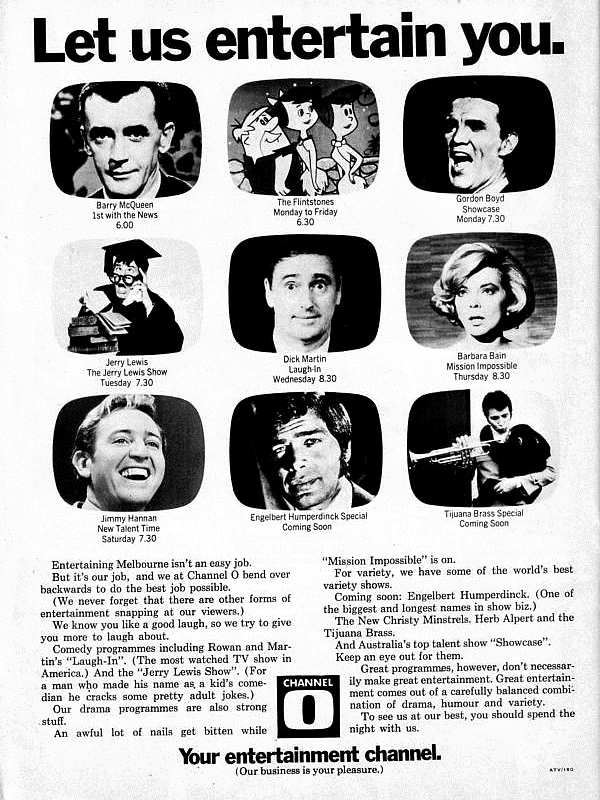
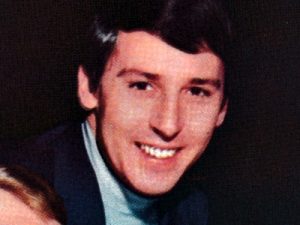
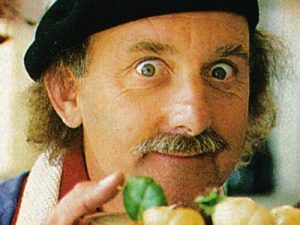
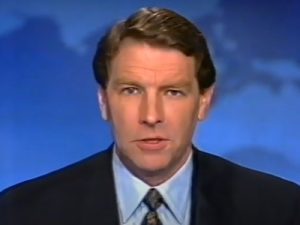
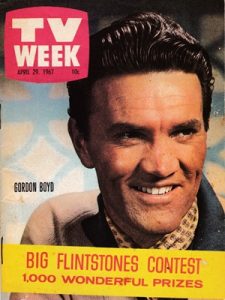
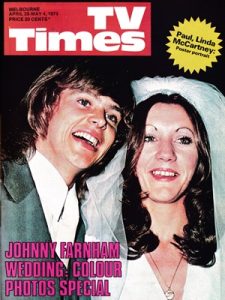
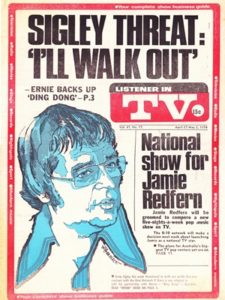
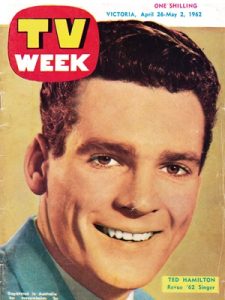
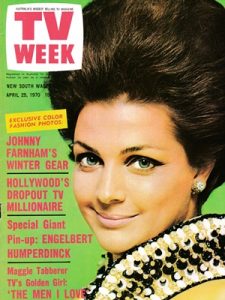
Terrific piece and so many memories rekindled. Thank you.
Thanks so much. Bringing back many memories (and mamories).